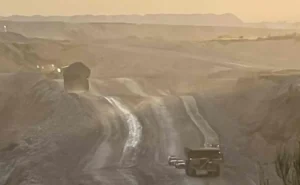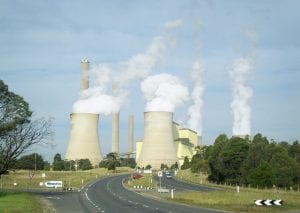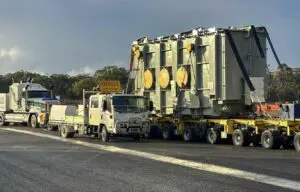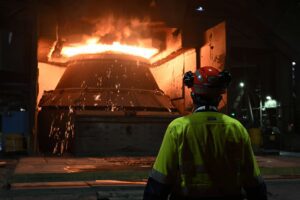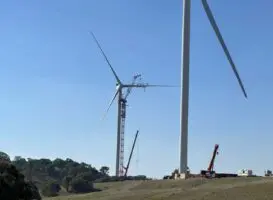The Climate Council has said out loud what last week’s Finkel Review of Australia’s energy market would not: coal power has little to no place in Australia’s future generation mix, if held to the most basic standards of sound economics or effective carbon emissions reductions.
In a briefing, published on Friday, the Climate Council seeks to remind that coal is the most the expensive and emissions-intensive form of new power generation, making it risky for investors, expensive for energy users and disastrous for climate change: It will undermine Australia’s climate efforts, and drive power prices even higher.
The paper, titled Clean Coal, is particularly keen to unpick that very misnomer, noting that coal is “always polluting,” while the technology that promises to make it less so – carbon capture and storage – is far from proven.
“There has been a lot of misinformation flying around the Parliament this week,” said Climate Council CEO Amanda McKenzie, in a statement on Friday.
“Certain politicians have been either misleading or seriously out of date with their stance on the future of coal,” she said.
“A new high-efficiency coal plant run on black coal (so called clean coal) would produce about 80 per cent of the emissions of an equivalent old plant – so it is never clean.
“Carbon capture and storage is a theoretical technology with only two plants operating world-wide. These two plants use the technology for oil recovery, rather than to reduce pollution from the power station.”
McKenzie also notes that Australia’s federal government has invested $590 million in CCS technology so far, without producing a single operating plant.
This has all been pointed out many times before, and by many different analysts and organisations, including Bloomberg New Energy Finance in February. But McKenzie and Co. obviously feel it bears repeating in the wake of the publication of the Finkel energy blueprint.
As we pointed out here on Monday, the long-awaited review of Australia’s energy market – led by chief scientist Dr Alan Finkel – made a good show of pretending existing coal power had a future, by suggesting it would still account for one-quarter of Australia’s generation by 2050.
It was also meticulous in its efforts to avoid ever actually stating that new coal would not be built; part of an apparent strategy to bring the Coalition’s substantial right wing rump on board, and get some sort of policy in place.
As Finkel himself put it, in a rather frustrated tone at last Friday’s press conference: “Why do they care what the underlying generation mix is? If it’s meeting our objectives of security, reliability and lowering emissions, what more would you want to ask?”
But as the Climate Council report notes, “coal power doesn’t meet the above criteria.” And yet this hasn’t stopped the federal government from introducing legislation to enable the Clean Energy Finance Corporation to invest in coal with carbon capture and storage.
Which does beg at least one question: How can Australia meet its obligations to cut emissions in line with limiting global warming to less than 2°C and also keep burning coal for power to 2050?
According to the Climate Council report, even if carbon capture and storage did work, coal plants with CCS could wind up producing more emissions than a standard coal plant once the extracted oil is burnt.
“The two coal power plants with CCS currently operating (and the further power plant under construction) all pump their emissions underground to extract more oil.
“So-called “clean coal” does not help Australia meet its obligations to reduce its economy-wide emissions 26-28 per cent by 2030 below 2005 levels, and will certainly not help Australia be on track for limiting global temperature rise below 2 degrees Celsius,” it says.
For those unconvinced that meeting climate targets is something Australia needs to do – refer the Coalition’s right wing rump – the report also points to the economics, which for coal power, clean or not, are particularly devastating.
“Today renewable energy is far cheaper that new coal plants,” McKenzie says.
“New coal plants are at least double the cost of wind and significantly more than the cost of solar.
“New coal power stations would need to see electricity prices to rise to up to four times higher than they are today, to earn sufficient revenue to be viable.”
By way of example, the briefing paper cites AGL’s Silverton Wind Farm, which will deliver power to the grid at a price of $65/MWh, compared to new coal costing between $134 – $203/MWh.
Coal with carbon capture and storage , meanwhile, would cost more than $352/MWh, with negligible environmental benefits.
“We need a pragmatic, informed debate about Australia’s energy future, not false solutions and ideological posturing,” said McKenzie.
“Those vested interests still promoting the false promise of ‘clean coal’ are trying to distort the debate, but the numbers don’t add up.
“Politicians arguing that coal is cheaper are just plain wrong. They are out of date by about a decade. Renewable energy is now hands down the cheapest source of power,” she said.
“Tackling climate change means fundamentally phasing out polluting fossil fuels. It is impossible to continue to build more fossil fuel infrastructure and tackle climate change.”



